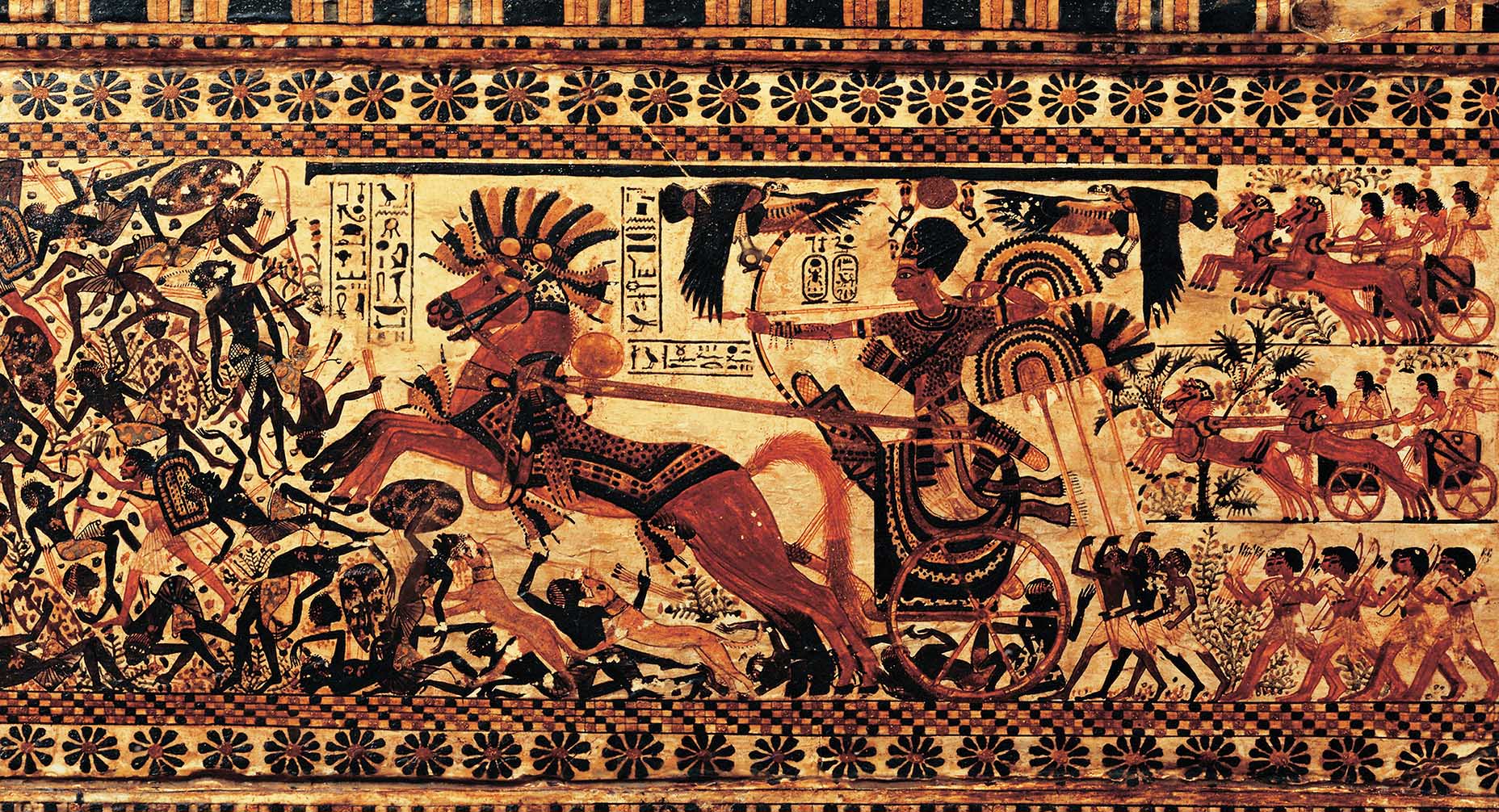Before You Read This Chapter
STORY LINES
- To study the earliest civilizations, historians interpret evidence from a diverse array of sources, many of them environmental, visual, and archaeological.
- All civilizations emerge as the result of complex historical processes specific to a time and place, yet share certain defining features.
- Prominent individuals can achieve power through the use of force, but maintaining power requires legitimacy.
- Those individuals wielding power in ancient Mesopotamia and Egypt responded in different ways to the challenge of establishing legitimacy.
CHRONOLOGY
11,000 B.C.E.Neolithic Revolution begins
7500–5700 B.C.E.Çatalhöyük flourishes
6800–3000 B.C.E.Jericho flourishes
4300–2900 B.C.E.The rise of Uruk in Sumer
c. 3200 B.C.E.Development of writing
c. 3100 B.C.E.King Narmer unites Upper and Lower Egypt
2900–2500 B.C.E.Early Dynastic Period in Sumer
c. 2700 B.C.E.Reign of Gilgamesh
c. 2686–2160 B.C.E.Old Kingdom of Egypt
c. 2650 B.C.E.Imhotep engineers the Step Pyramid for King Djoser
c. 2350 B.C.E.Sargon of Akkad consolidates power in Sumer
2160–2055 B.C.E.First Intermediate Period in Egypt
2100–2000 B.C.E.Ziggurat of Ur constructed
2055–c. 1650 B.C.E.Middle Kingdom of Egypt
c. 1792–1750 B.C.E.Reign of Hammurabi
CORE OBJECTIVES
- UNDERSTAND the challenges involved in studying the distant past and the crucial importance of interdisciplinary methods and unconventional sources.
- DEFINE the key characteristics of any civilization.
- IDENTIFY the factors that shaped the earliest cities.
- EXPLAIN Hammurabi’s tools for governing the cities of his empire.
- DESCRIBE the main differences between the Mesopotamian and Egyptian civilizations.
There was a time, the story goes, when all the peoples of the earth shared a common language and could accomplish great things. They developed new technologies and aspired to build a city with a tower reaching to the sky. But their god was troubled by this, so he destroyed their civilization by making it impossible for them to understand each other’s speech.
We know this as the story of Babel and its ill-fated tower. It was a legend that probably circulated among peoples of the ancient world for thousands of years. It then became part of the Hebrew book we call by its Greek name, Genesis: “the beginning.” This story lets us glimpse some of the conditions in which early civilizations arose, and it also singles out the challenges that make it hard to study them. We no longer speak the same languages as those ancient peoples, just as we no longer have direct access to their experiences or beliefs.
Such foundational stories are usually called myths, and they are an early form of history. For the people who told them, these tales helped to make sense of the present by explaining the past. The story of Babel conveyed the message that human beings are powerful when they share a common goal, and what enables that interaction is civilization. To the peoples of the ancient world, the benefits of civilization—stability, government, art, writing, technology—were usually products of sedentary city life. The very word civilization derives from the Latin word civis, “city.” Cities, however, became possible only as a result of innovations that began around the end of the last Ice Age, about 13,000 years ago, and that came to fruition some 8,000 years later. The history of civilization is therefore a short one. Within the study of humanity, which reaches back to the genus Homo in Africa some 1.7 million years ago, it is merely a blip on the radar screen. Even within the history of Homo sapiens, the species to which we all belong, and which evolved about 40,000 years ago, civilization is a very recent development.
The study of the earliest civilizations is both fascinating and difficult. Historians still do not understand why some of the first known cities should have developed in the region between the Tigris and the Euphrates Rivers, in what is now Iraq. Once developed, however, the basic patterns of urban life quickly spread and proliferated. A network of trading connections linked early cities and other, more seasonal settlements, but intense competition for resources made alliances fragile and warfare frequent. Then, around the middle of the second millennium B.C.E. (that is, “Before the Common Era,” equivalent to the Christian dating system B.C., “Before Christ”), rulers of these independent cities started to make broader claims to power over their citizens and other states. How this happened—and how we know that it happened—is the subject of Chapter 1.
